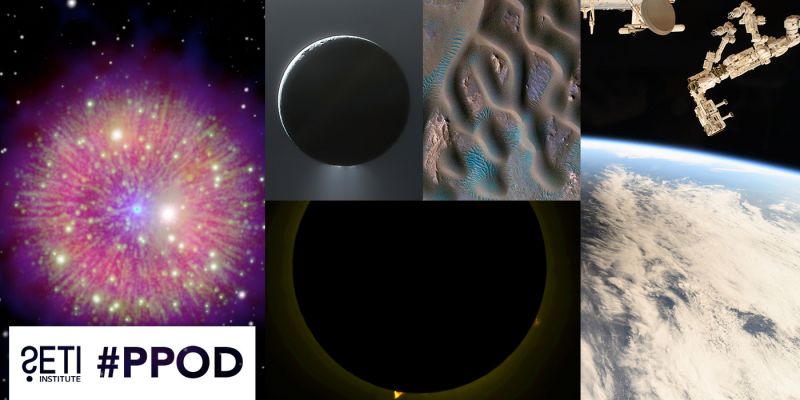Crop-circle-creating aliens vs. Mel Gibson.

Are the aliens signaling us with grain graffiti? Are they leaving evidence of their presence on Earth by feeling our Wheaties?
Some folks think so. Despite the fact that a lot of the elaborate cereal graphics that have appeared during the last few decades in England and elsewhere are the admitted handiwork of pranksters and artists, there are still many people who think that some of these crop circles have been carved by extraterrestrials.
Hollywood director M. Night Shyamalan has capitalized on the appeal of this phenomenon in his new, high-profile film "Signs." Mel Gibson, a man of the cloth who has had one of those perennially popular "crises of faith," has given theology the heave-ho in favor of raising corn and kids. His rustic, rural lifestyle is set on tilt when aliens mess up the back forty with a large glyph. Soon thereafter, Mel is staring into the semi-infinite with his steely blues, intoning "it’s begun."
Despite its theme, "Signs" is not really a sci-fi film. The movie has large dollops of horror and humor, but it’s mostly about how farmer Gibson gets his God groove back. Nonetheless, the motives and methods of the aliens that have defaced crops around the world are worthy of discussion, and I’ll indulge in some below. I’ve tried to avoid information that would be a spoiler for readers who haven’t seen the film, but being consummately mortal, I cannot guarantee perfection in this task. Stop reading here if you value total cinema surprise.
OK, it’s the start of the 21st century, and the aliens have come to Earth to harvest us, whatever that means. (As an aside, I note that despite being up to his ears in ears, Mel Gibson apparently has little interest in harvesting his crop. One assumes that growing corn is merely a hobby, and he makes his real living by writing books or modeling swim wear.) The aliens are going to accomplish their ambiguous, but clearly evil objectives with claw-to-hand combat, eschewing high technology lest we retaliate with nuclear weapons and ruin the planet. The crop circles are intended as navigation beacons for the invasion fleet. Of course, this hardly makes sense. Would the Air Force scrape lines and circles in the sands of Afghanistan to guide their maneuvers? Is it reasonable of the aliens to trust their navigation to devices that can be obliterated in a matter of hours by an angry farmer with a tractor?
It doesn’t matter. The hostile horde from afar turns out to be astoundingly ineffectual when it comes to battling earthlings. Somehow they have the technology to travel many light-years to our planet, and can rapidly engrave our crops, but when the chips are down, these grays in the maize can’t bash their way through an old cellar door. As is the usual case for Hollywood aliens, these guys are highly anthropomorphic. (But why would species from another planet look like us?) Furthermore, while we lumber around with cell phones, PDAs, wallets, clothing, and hair, the aliens show up buck-naked.
All right, so "Signs" isn’t very rational when it comes to aliens. But what about the crop circles that actually do appear near harvest time around the world? Could any of them be the work of visitors from the stars? I asked John Lundberg, a member of the Circlemakers [http://www.circlemakers.org] art collective in the United Kingdom, whether he had ever seen a crop glyph that couldn’t be constructed in one night by a determined team of humans.
"Well, the formation that appeared in Milk Hill last year, which had 409 circles and was nearly 1,000 feet across – that was one of the few formations that could just barely be done in short order," said Lundberg. "That one pushed the envelope."
Of course, pushing the envelope is one thing, but bypassing the envelope altogether is something else. One has to wonder why sophisticated aliens would limit themselves to a few acres of canvas when they could, one presumes, scribe their patterns on an entire county. More suspicious yet, the circles are always constructed at night, and can only be made when a cereal crop (canola, barley, or wheat) is ready to harvest – which means between April and early September in Britain. The former fact suggests that the aliens are forbidden by union rules from working during the day, and the latter bespeaks a communication mode that is only occasionally available.
In "Signs," the grain graphics are made in Pennsylvania corn. In fact, this very seldom happens. "I originally thought this was a miscommunication," notes Lundberg. "In Britain, ‘corn’ means any kind of cereal crop – including, of course, wheat." Maybe Shyamalan simply misunderstood, assuming the American meaning of corn. As a matter of fact, to actually make a crop circle by bending corn stalks isn’t easy. "It’s as tough as chopping down trees," Lundberg says. "But in the film, a corn field is a great dramatic device. It wouldn’t be very scary to run around in a wheat field that’s merely two feet high."
Those folks that continue to believe that at least a few of the non-Hollywood crop circles have alien architects often point to so-called physical anomalies. The wheat stalks themselves seem pathologically different. But as Lundberg notes, "when you crush wheat down, there are going to be biological changes." In addition, finding unusual components in the soil at a crop circle doesn’t mean much unless you do a controlled experiment, and sample soil at nearby, but unblemished, locations. Finally, there’s the hoax factor. One published advocate of anomalies in crop circles continues to maintain that he found one saturated with "meteorite dust," despite the fact that human perpetrators have admitted to pouring iron filings on this particular glyph.
Shyamalan’s movie is good fun, and its corn-centric scenario will have you buying extra popcorn at the concession stand. But there’s no reason to think that such decorative patterns have much to do with the sophisticated beings that might truly inhabit the distant realms of space. Proof of their existence requires more than bent stalks.






